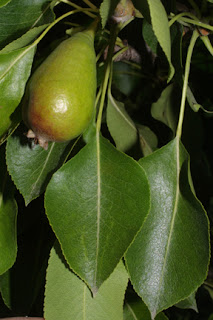In my opinion this has the most appealing of all the Spring blossom, alongside its edible relative Malus domestica, because of the very delicate pink-white hue. Most apple trees have this colour as they are not the truly wild pure white species, but crossed with M. domestica. They are at their peak now in Manchester, though today’s stormy weather hasn’t done any of the blossom any good. The leaves are just about unfurled, and are rounded ovals with toothed edges and pointed end. At this time of year the leaves are downy. Bark is grey-brown, and on a mature specimen quite scaly and cracked. Form could be very variable so the below winter skeleton is just a guide.
There are many ornamental cultivars, with bright red, yellow or orange fruits. Beware of planting these over paving as the fallen fruit makes a slippery mess in the autumn. Look at the (probably) infallible RHS website for more on these.
 |
 |












